Gimbap (김밥) is one of Korea’s most beloved foods. It literally means “seaweed rice roll,” made with rice, vegetables, and various fillings rolled in dried seaweed. Just like sushi rolls, but uniquely Korean. If you’re visiting Korea, here are 10 must-try gimbap varieties.
목차
Toggle🥢 Gimbap Varieties – Top 10 Types of Gimbap You Must Try in Korea
1. Classic Vegetable Gimbap (야채김밥)
The most traditional type, filled with pickled radish, spinach, carrots, and egg. It’s simple, light, and always delicious.
👉 Perfect for first-timers!
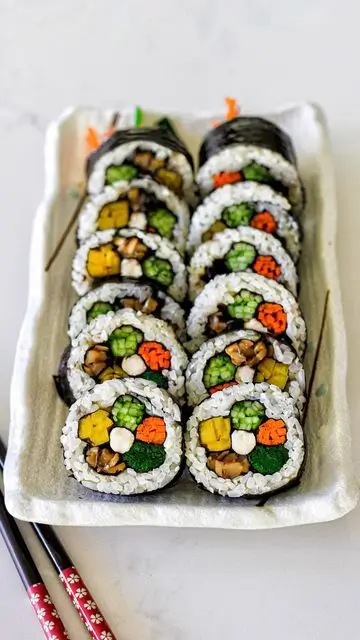
2. Egg Gimbap (계란김밥)
Made with extra egg strips, sometimes even wrapped in an egg sheet. Great for kids and people who prefer mild flavors.
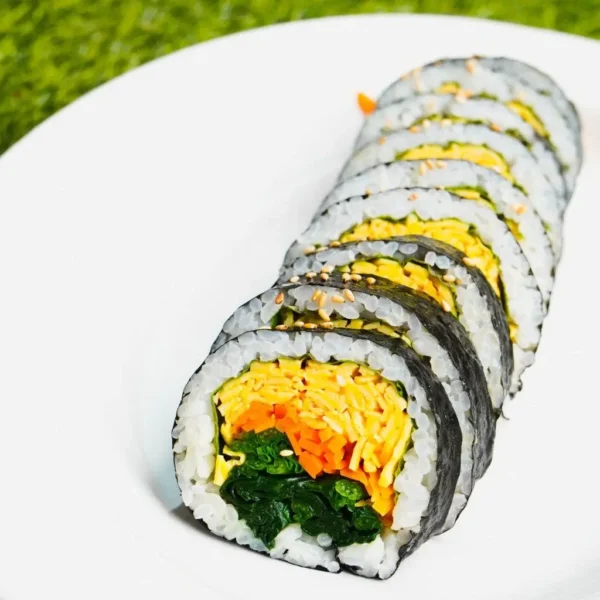
3. Tuna Mayo Gimbap (참치마요김밥)
One of the most popular versions today. Filled with tuna mixed with mayonnaise and fresh vegetables. Creamy and savory!
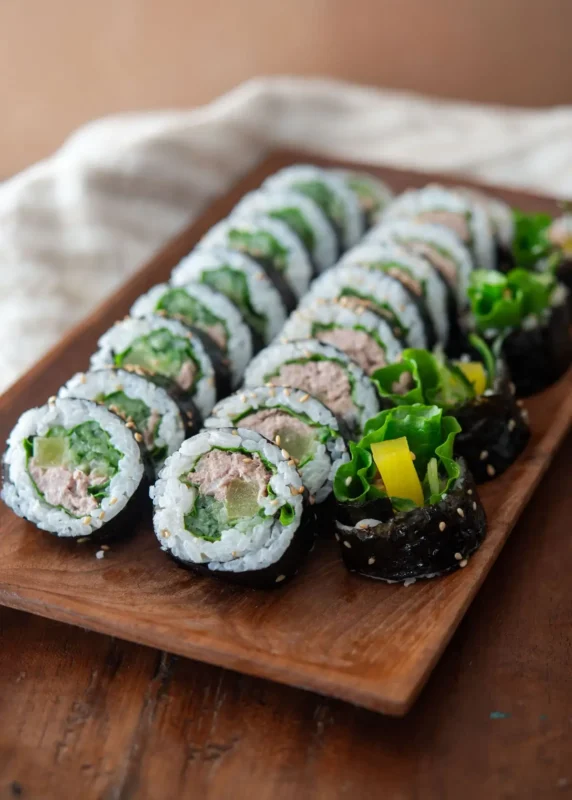
4. Beef Bulgogi Gimbap (불고기김밥)
Filled with sweet and savory marinated beef bulgogi. A more filling and hearty version that foreigners especially love.

5. Kimchi Gimbap (김치김밥)
For those who like spicy food! Stir-fried kimchi is added as the main filling, giving the roll a tangy and spicy flavor.
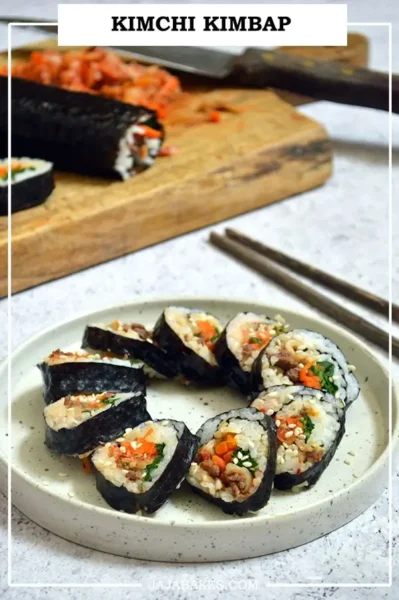
6. Cheese Gimbap (치즈김밥)
Melted cheese is rolled inside with rice and vegetables. The combination of salty cheese and crunchy veggies is addictive.
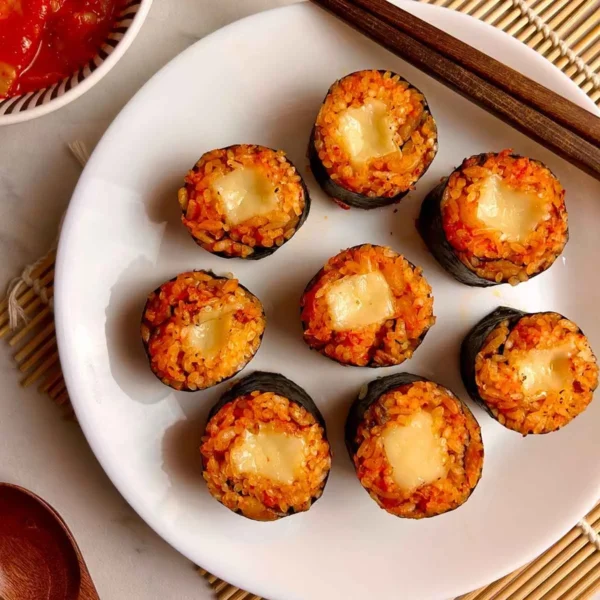
7. Shrimp Tempura Gimbap (새우튀김김밥)
Crispy fried shrimp inside the roll. Crunchy, savory, and a bit fancy compared to classic gimbap.
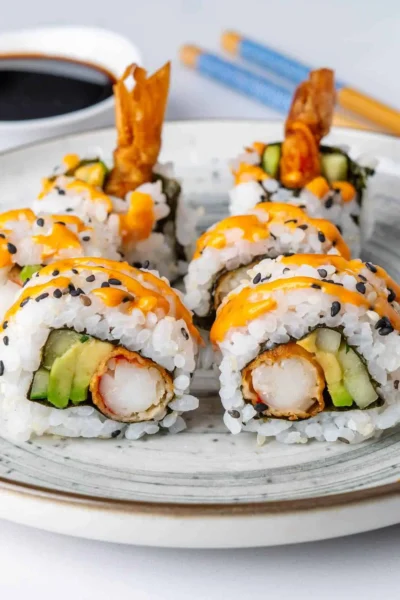
8. Spam Gimbap (스팸김밥)
Inspired by Hawaii’s spam musubi, this roll includes pan-fried spam slices. Salty, meaty, and very filling.
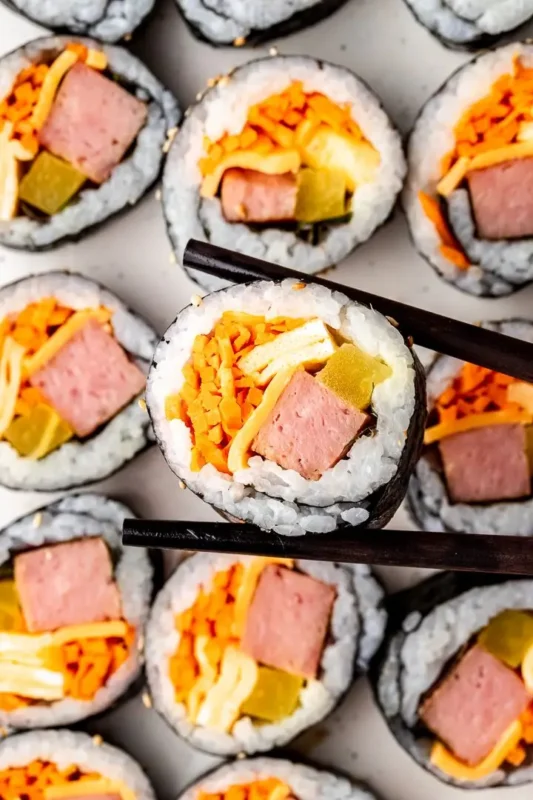
9. Smoked Salmon Gimbap (훈제연어김밥)
A fusion style with smoked salmon, cream cheese, or avocado. Great for sushi lovers who want a Korean twist.
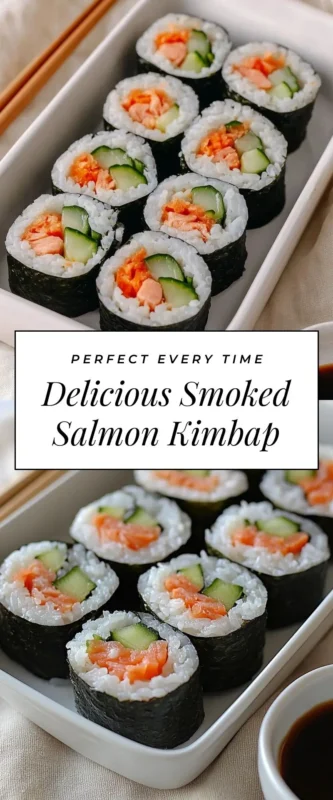
10. Vegan Gimbap (채식김밥)
Made without meat, fish, or egg. Instead, filled with tofu, mushrooms, and extra veggies. A healthy option for vegetarians.

🌟 Conclusion
Whether you’re grabbing a quick bite (on the go) or enjoying a full picnic, you can’t go wrong with gimbap. From classic vegetable rolls to creative fusion styles, there’s something for everyone. Next time you visit Korea, don’t forget to try at least one—or maybe all—of these gimbap varieties!
🍙 Gimbap & Perfect Side Dishes
Kimbap is great on its own, but Koreans usually prefer to enjoy it with other dishes. In particular, at bunsikjip (Korean snack bars), kimbap is often paired with a variety of foods and eaten like a set meal.
1. Ramyeon (라면)
Nothing beats the combination of gimbap + ramyeon. The hot, spicy broth of Korean instant noodles balances perfectly with the mild, savory taste of gimbap.
👉 This is probably the most classic combo in Korea!
2. Udon (우동)
Korean-style udon is a bit different from Japanese udon — the broth is lighter, and the toppings often include fish cakes (odeng). Pairing warm udon soup with gimbap makes for a comforting meal, especially in winter.
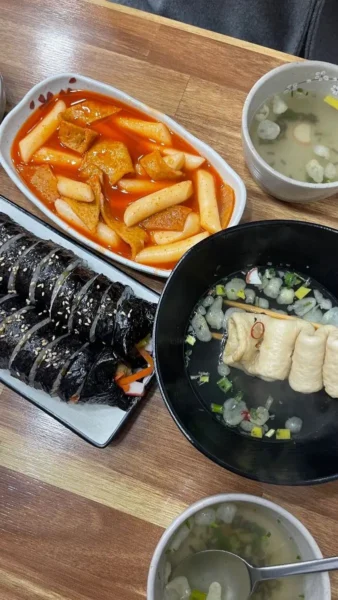
3. Tteokbokki (떡볶이)
Spicy rice cakes in a red chili sauce. The chewy texture of tteokbokki and the spicy kick pair well with the simple flavors of gimbap. Many people order these two together at snack shops.
4. Jjolmyeon (쫄면)
Chewy cold noodles mixed with spicy, tangy sauce and fresh vegetables. Eating jjolmyeon with gimbap gives you a nice balance of textures — soft rice rolls and chewy noodles.
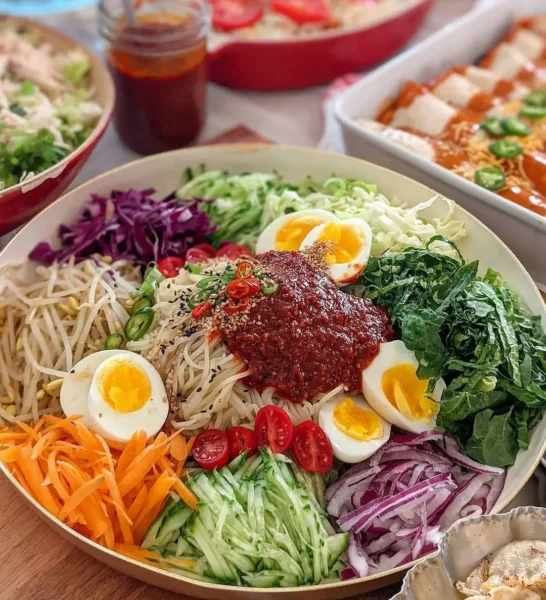
5. Fish Cake Soup (어묵국)
A light broth with skewered fish cakes (odeng). Since gimbap doesn’t usually come with soup, fish cake soup is the perfect side dish to warm you up while eating gimbap.
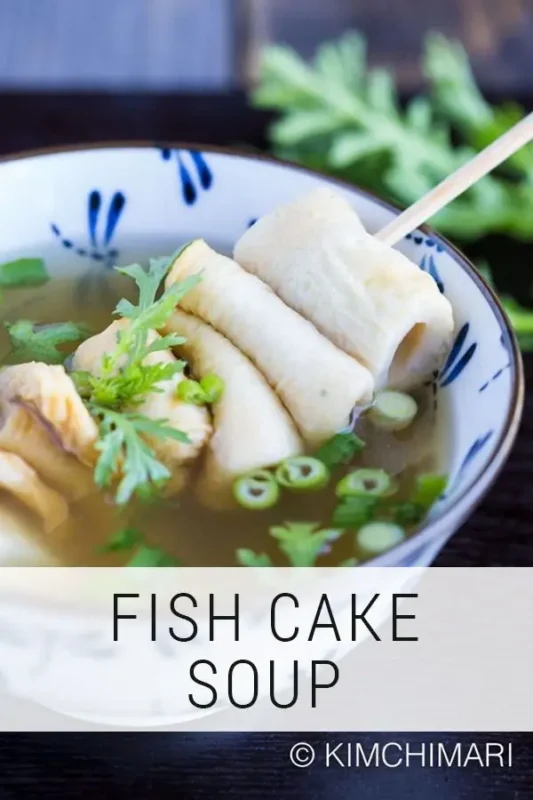
🌟 Conclusion
If you want the full Korean snack bar experience, don’t just order gimbap alone. Pair it with ramyun, udon, tteokbokki, or jjolmyeon — and don’t forget a bowl of fish cake soup on the side. This way, you’ll really understand why Koreans say:
👉“You can’t go wrong with gimbap!”